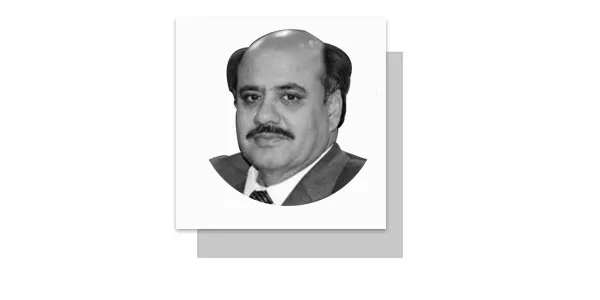THE rapid transition in the global strategic environment has immensely revitalized the concept of collective security and fortified the North Atlantic Treaty Organization. Since the Russian invasion of Ukraine, two European countries—Finland and Sweden—have ended their two centuries of neutrality and joined NATO. In addition to European defence, a major theme of this year’s NATO Summit was NATO and the Indo-Pacific. The leaders of Australia, Japan, New Zealand and the Republic of Korea have been participating in NATO’s annual Summits since 2022. Presently, NATO is the only surviving Cold War military alliance aiming for the collective security of the member states. It was created in 1949, with its 12 original members committed to defending the North Atlantic area. Since then, it has expanded to include 32 nations from the United States to the Russian border. On June 9-11, 2024, the leaders of NATO’s 32 gathered in Washington for the alliances’ 75thanniversary. While celebrating 75 years of unity between Europe and North America, the members have demonstrated their unity in support of Ukraine and expressed their resolve to check China’s assertiveness in Asia-Pacific.
The 2024 NATO Annual Summit’s communiqué, released on July 10, 2024, states, “Russia remains the most significant and direct threat to Allies’ security.” The members reiterated, “We stand in unity and solidarity in the face of a brutal war of aggression on the European continent and at a critical time for our security.” NATO leaders have promised to provide Ukraine with at least $43bn in military aid within the next year, formally declaring Kyiv on an “irreversible path” to membership in the Western military Alliance. The United States, Netherlands and Denmark announced that the first NATO-provided F-16 fighter jets would be in the hands of Ukrainian military pilots by this summer. Currently, Americans prioritize Asia-Pacific concerns over Euro-Atlantic military challenges due to growing cooperation among China, Russia, North Korea and Iran. The Washington Summit Declaration highlighted Iran’s destabilizing actions and the People’s Republic of China’s (P.R.C.) coercive policies as threats to Euro-Atlantic security. It also noted the deepening partnership between Russia and the P.R.C. as a major concern. NATO values the Indo-Pacific’s impact on Euro-Atlantic security and welcomes Asia-Pacific partners’ contributions. The U.S. established treaties with the Philippines and Japan (1951), South Korea (1953), Taiwan (1954) and Australia and New Zealand (1951) and could pressure Asian allies for greater military burden sharing.
The demise of the former Soviet Union and the end of the Warsaw Pact questioned the continuity of NATO. Many Europeans contemplated swapping NATO with the Euro Corps. However, the former Yugoslavia dismemberment and Kosovo crises exposed the European’s inability to handle the military crises. Consequently, the Europeans’ reliance on NATO continued and the American troops remained the permanent bodyguard of the Europeans. Some 90,000 U.S. troops are currently stationed in Germany, Italy, Britain and elsewhere, making up a significant portion of the 500,000 NATO troops in high readiness. On July 10, 2024, the United States and Germany announced in a joint statement that the U.S. will start deploying long-range fire capabilities, including SM-6, Tomahawk cruise missiles and developmental hypersonic weapons in Germany in 2026 to demonstrate its commitment to NATO and European defence.
The United States’ share of allied G.D.P. has averaged roughly 36 percent, while its share of allied military spending has been more than 61 percent since 1960. (Cato Institute’s Policy Analysis No. 940, March 7, 2023). Washington’s bearing a higher burden privileged it to control alliance policy. So, in alliance relationships, there is a trade-off between control over alliance policy and the equitable distribution of defence burdens. Secondly, the military important European states will not kowtow to Russia. Third, the Supreme Allied Commander for Europe has always been an American. Fourth, NATO’s policy is an extension of the Pentagon’s strategy. Since the beginning, American officials have struggled to pursue NATO members to increase their defence exertions through exhortation. However, the Europeans need to pay more attention to the American’s demand to distribute the defence burden evenly. Presidential candidate Donald Trump and an isolationist wing of the Republican Party believe that Europeans need to shoulder more responsibility for their defence by increasing investment in their militaries. During his previous tenure, he started the withdrawal of the U.S. troops from Europe, which Biden rescinded after taking office. Biden sent 20,000 more troops to Eastern Europe and announced new initiatives to reinforce European security.
NATO countries are investing more in security. Russia’s annexation of Crimea in 2014 and the 2022 invasion of Ukraine have alarmed Europe, prompting increased defence budgets since 2014. In 2022, German Chancellor Olaf Scholz announced a €100 billion defence fund. By 2024, European allies and Canada boosted defense spending by 18%, the largest increase since the Cold War. Over two-thirds of NATO members now meet the 2% GDP defense spending commitment. NATO’s strength has grown, with half a million troops ready across all domains. However, concerns over a potential isolationist Trump victory and the ongoing Ukraine war have revived debates on Euro deterrence and nuclear defense. In conclusion, the 32 Alliance members have rationalized the Alliance’s continuity by enunciating the importance of transatlantic cooperation in maintaining global security. During the 2024 NATO Summit, the members contemplated strategies to counter Russian revanchism, defeat the Kremlin in the ongoing war in Ukraine, address hybrid, cyber, space, and other threats and malicious activities from state and non-state actors, and advance the Alliance’s military capabilities to be fit for purpose for the battlefields of the future. This strategic planning and focus on future readiness should instill confidence in the audience about the Alliance’s preparedness.
—The writer is professor at the School of Politics and International Relations, Quaid-i-Azam University.
Email: [email protected]










